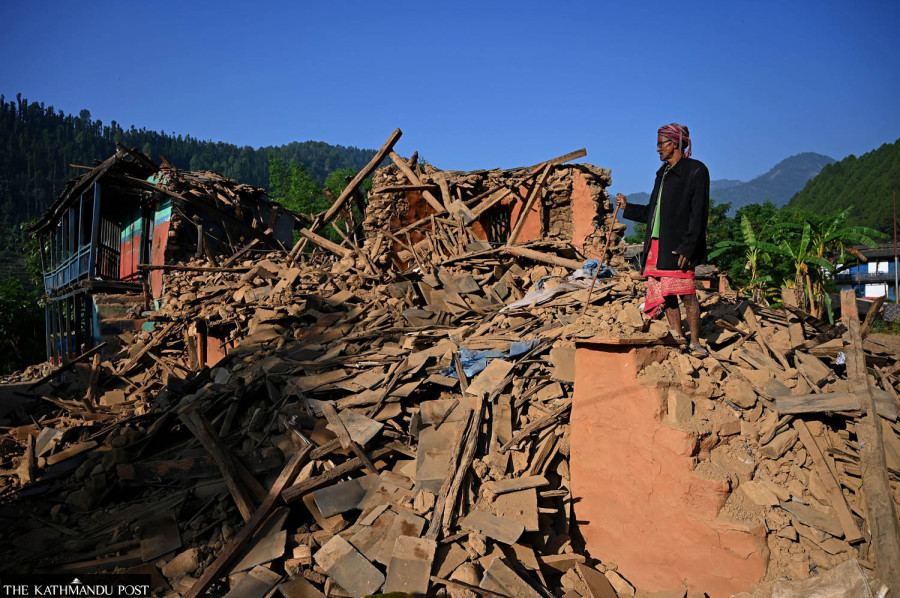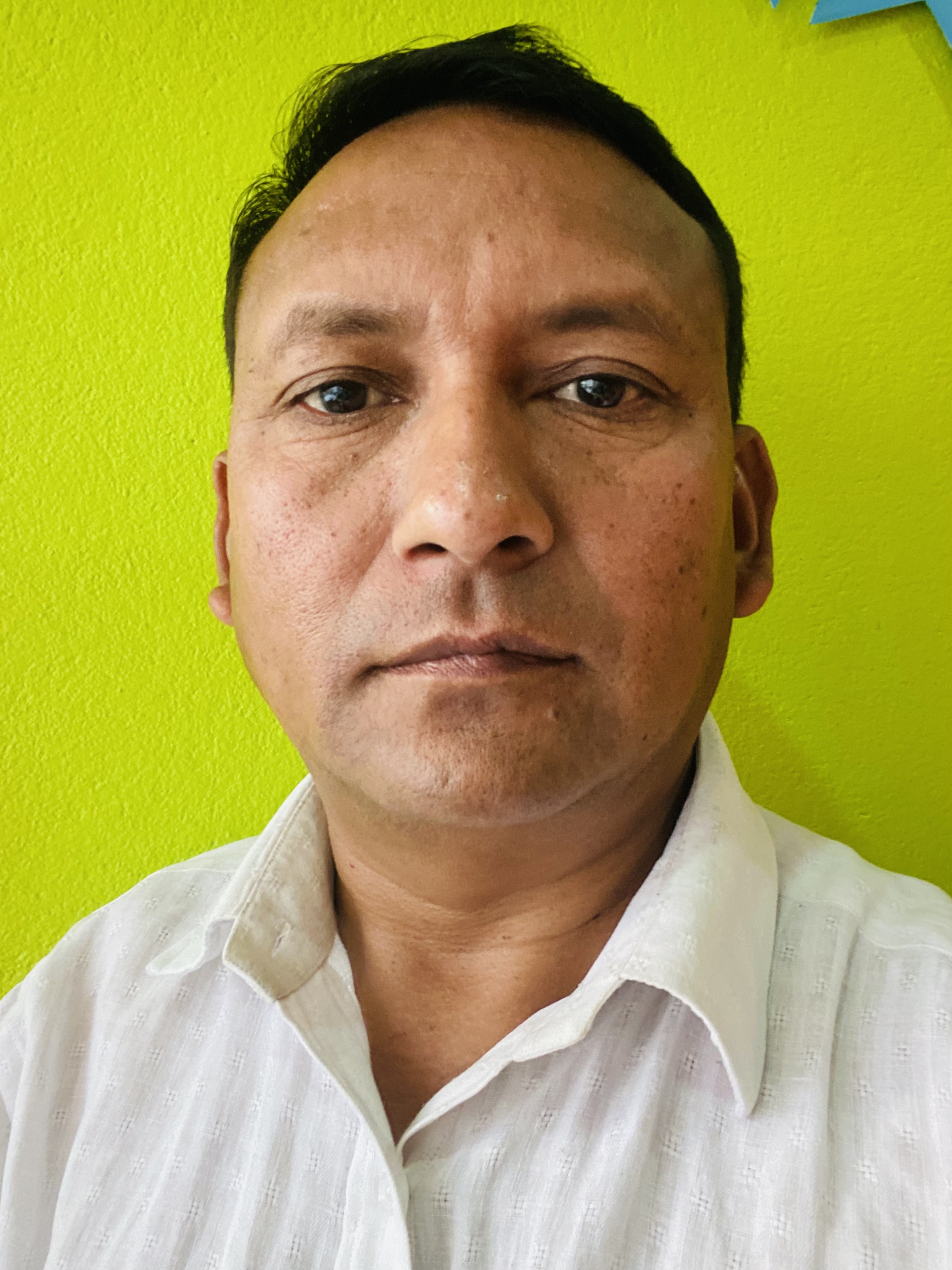Columns
Earthquakes and Dalit victims
Natural disasters tend to hurt minorities and poorer sections of society more.
Mitra Pariyar
On October 14, 2015, following the deadly 2015 Gorkha Earthquakes, American professors Mary Cameron and Steve Folmar and I published a short but unprecedented article in the academic journal Cultural Anthropology, titled “Digging for Dalits”. The very first lines of the article stated our critical interest there: “Where can we find Dalits in discussions of the earthquakes? An apt metaphor would be ‘under the rubble’”.
Unfortunately, the situation has not changed much since. Neither academic researchers nor journalists nor policymakers study natural disasters through the caste lens. Disaster management rarely considers issues of caste and casteism, and this is a wrong approach.
Nature does not discriminate against anyone, but social and political marginalisation often compound the impact of natural calamities. Evidence suggests that natural disasters like tsunami, flash floods, typhoons, landslides and earthquakes hurt minorities and poorer sections of society more, and that they are more likely to be left out of relief and rehabilitation. The same is true with the black and ethnic minorities hit by hurricanes and typhoons in American coasts.
Caste, a critical factor
Among other issues, caste is a predominant social factor in South Asia, including Nepal. Here the social structure is vertical: Caste and class hierarchies are steeper than the hills. Caste permeates almost every fibre of society and perpetuates inequality.
Go to almost any settlement of Nepal, particularly in the hills and mountains, and you will notice a common pattern of caste settlement. Much of the fertile and low-lying areas tend to be occupied by the dominant “upper castes,” and the steep barren lands are often inhabited by marginalised groups, Dalits in particular.
Needless to say, this allotment of the real estate according to caste has long been systematically enforced by the state. Following the dictates of Manusmriti and other casteist texts, upon which Nepali society has been framed, Dalits are placed at the margins of society.
Besides, barely able to make a living upon that rocky slope, Dalits are impoverished. They cannot build strong concrete homes. So, when the flash floods or landslides or earthquakes strike, Dalits have the minimum chance of survival. Their homes and properties tend to be destroyed more.
And those poor Dalits who survive the disaster receive the least attention of relief workers. Much of the relief materials are supplied to those with connections to people in power. In most cases, Dalits have no links to state mechanisms and no access to donor agencies and so are often neglected.
As I wrote in the aforementioned academic article, I was amazed by a scene of my own village, a Gurkha settlement in Gorkha, following the 2015 earthquakes. The lower flatlands inhabited by the Bahun were marked by big and colourful tents. Higher up, predominated by the Gurung and Magar, there were few good tents. Higher still, on a slope, there was no good tent at all!
Plight of Jajarkot
On November 3, 2023, a 6.4 magnitude earthquake struck the hills of Jajarkot and West Rukum, killing over 154 people and destroying thousands of homes. And, as widely reported, the casualty figures from the Dalit and ethnic minority communities were disproportionately higher.
I am just back from a tour of some of the worst affected villages of Jajarkot. People of all castes in many villages are suffering badly. They are living a very hazardous life under a thin tarpaulin, with cold drops of dew dropping on them at dawn. Most people have received not proper tents but thin sheets of tarpaulin, under which they live in cold millet and rice patches. No wonder, over 13 people have already died of cold in both districts.
People are generally angry about the very slow progress in terms of delivery. Especially they want to obtain that grant, Rs50,000 per household, to build temporary shelters as soon as possible. It’s a race against time as the temperatures in the hills plummet, but the government action is typically slow.
Needless to say, those most worried about surviving the cold winter nights are Dalits. They are anxious that, given the rising price of everything, the amount probably will not be able to build a warm enough temporary shelter to weather the winter chill. Unlike the upper castes, many of them lack the resources to add to the government allowance for the construction.
Chiuri—all Dalit community
As per media reports, in the remote village of Chiuri, ward 1 of Nalgad Municipality in Jajarkot, 13 people lost their lives, including 4 members of the same family. Every home has been badly damaged or destroyed.
What many people don’t know is that this is an all-Dalit settlement, comprising about 18 Damai (tailors) families and the rest of the approximately 200 families are the Kami (blacksmiths).
From my observation of the place, and from my conversations with many residents, including the Dalit ward chairman, I found that Chiuri exemplifies a highly precarious life of contemporary Dalits under persistent exclusion and neglect of the state where natural disasters further complicate their problems. One should visit this village to see how all the recent political, constitutional, legal changes of the recent years have had little or no impact upon Dalit lives.
The traditional patron-client system is still intact here, wherein Dalits must serve their upper-caste masters in nearby villages with their traditional skills for little grains and other favours twice or thrice a year. Dalits should strictly observe all traditional caste rules; they are likely to be beaten up for the slightest infringement of those rules. And the Damai are offended by offering them tails of slaughtered buffaloes and goats, including during important pujas and festivities.
The state too has badly ignored the Chiuri Dalits. Even though the place is not far from the municipal centre, Dally, and from the highway to Dolpa, there is still no electricity here. But all the other settlements in the vicinity have a reliable electrical supply. Ironically, the current energy minister in the federal government, Shakti Basnet, is from the same district—but the government does not seem ashamed at all by this blatant neglect of a Dalit village.
There is even a bigger worry now in Chiuri, especially in the aftermath of the recent earthquakes. The entire community nestled on a slope is in real danger because the tall and rock hills above it have been badly shaken. Large cracks have appeared throughout. Which means, particularly during the monsoon, there is a real risk of landslides and large rocks falling.
So, the whole village is clamouring for a permanent shifting to some other place, preferable somewhere in the southern plains. The local demand for the transfer of the community grew 11 years ago, when a flash flood hit many homes and properties. Somehow that did not happen. But the earthquakes have further damaged the hillside and people have obviously become much more fearful.
They do not want government support to build another home; they all want to get out! This they cannot do without government assistance. This is a very poor community which does not have a single person in civil service, military or police; none have gone to work in Western or even Gulf countries. Unable to make a living, most of them seasonally travel to Indian towns to work as daily wage labourers. Many of those killed during the earthquakes had returned home for the Dashain and Tihar festivals.




 19.12°C Kathmandu
19.12°C Kathmandu















